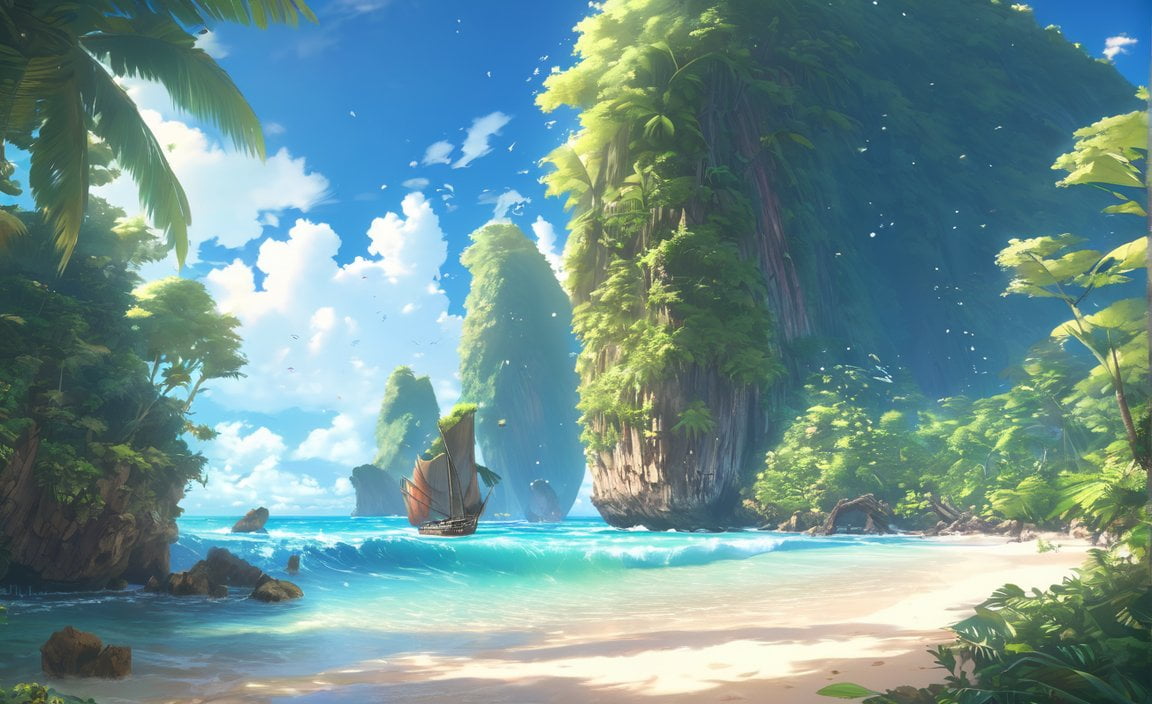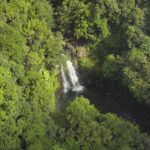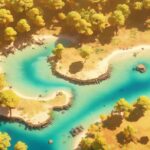Unraveling Guam’s Rich History and Culture through its Coordinates
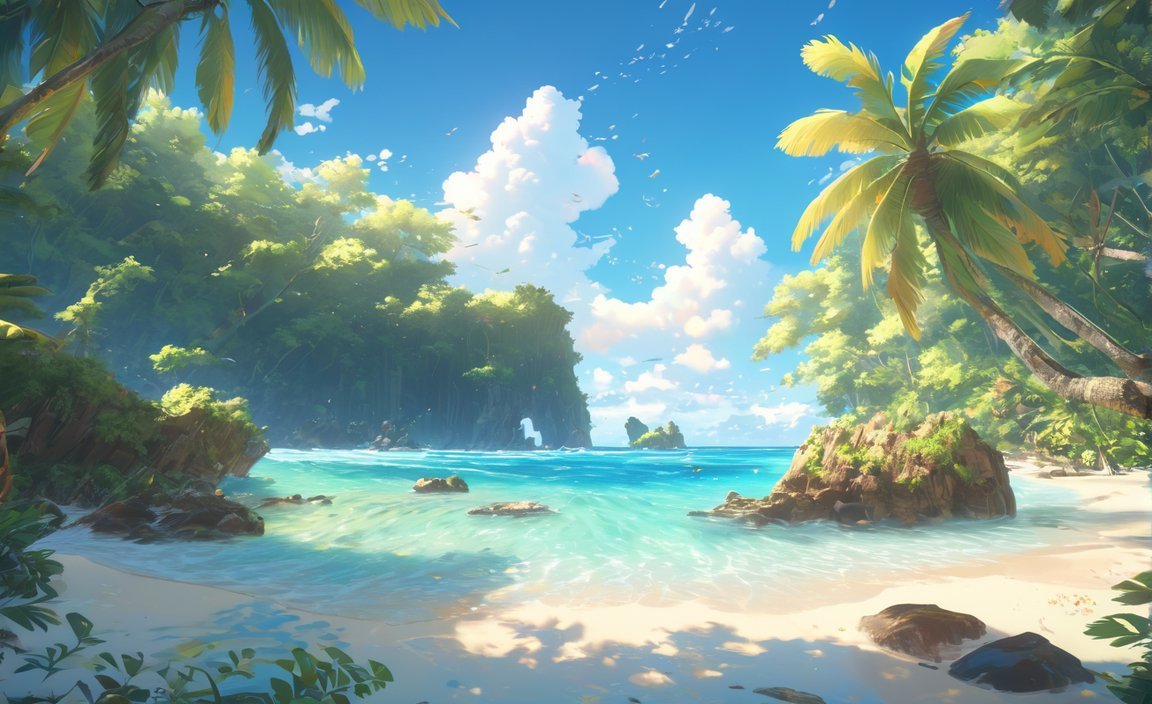
Nestled in the western Pacific Ocean, Guam’s strategic position at coordinates 13.4443° N latitude and 144.7937° E longitude has shaped its intriguing past and vibrant present. This tropical paradise, with its captivating geology, diverse climate, and unique location, holds within its coordinates a wealth of stories waiting to be discovered. Join us on a virtual journey as we explore how Guam’s coordinates have influenced its rich history, deeply-rooted culture, and fascinating attractions. Get ready to embark on an adventure like no other as we uncover the secrets of this enchanting island through the lens of its geographical coordinates.
Key Takeaways:
- Guam is an island community and an incorporated territory of the United States located in the North Pacific Ocean.
- The capital city of Guam is Hagåtña and it has a population of approximately 167,358.
- Guam covers a total area of about 210 square miles.
- It is strategically important for submarine communications cables linking the Western U.S., Hawaii, Australia, and Asia.
- Popular attractions in Guam include Tumon Bay, Two Lovers Point, and the War in the Pacific National Historical Park.
Guam Coordinates
Have you ever wondered how the geographical coordinates of a place can influence its history, culture, and attractions? Well, Guam, with its unique location in the vast North Pacific Ocean, is a perfect example of how coordinates can unravel a destination’s rich tapestry. So grab your virtual compass as we explore Guam’s fascinating coordinates and discover the wonders they hold.
The Gateway to the Pacific
Nestled at latitude 13.444304 and longitude 144.793732, Guam occupies a strategic position in the Northwestern Pacific. This tiny island community holds a pivotal role as an incorporated territory of the United States of America, connecting countries across the vast ocean. Its coordinates serve as a gateway, facilitating crucial submarine communications cables between the Western U.S., Hawaii, Australia, and Asia. With this important role, Guam’s coordinates become more than mere numbers – they represent a meeting point of cultures, ideas, and histories.
A Journey to Hagåtña
Now, let’s zoom in on Guam’s captivating capital city – Hagåtña. Situated on Guam’s western coast, this vibrant city lies at the coordinates that tell tales of resilience and heritage. As you explore Hagåtña, you’ll witness the interplay of past and present, where the historical landmarks and colonial legacies merge seamlessly with modern developments. The coordinates of Hagåtña, reflecting its storied past, invite you to delve into the intriguing history and culture that have shaped this remarkable city.
Unveiling Guam’s Splendors
Beyond Hagåtña, Guam’s coordinates unlock a treasure trove of attractions waiting to be explored. From the sparkling shores of Tumon Bay, where you can bask in the sun and immerse yourself in the crystal-clear waters, to the captivating Two Lovers Point, offering breathtaking panoramic views of the ocean – each attraction resonates with Guam’s unique location. The coordinates of these landmarks serve as coordinates of intrigue, inviting you to unravel their hidden stories.
Guam: Where Latitude Meets Longitude
Guam’s coordinates not only shape its history and culture but also encompass its awe-inspiring landscapes. With a population of approximately 167,358 people inhabiting this island paradise, Guam’s small size – approximately 210 square miles – merges harmoniously with the vastness of the Pacific Ocean. As you navigate the island, guided by its coordinates, you’ll witness a blend of geographic wonders, where palm-fringed beaches meet rugged cliffs, and dense jungles hide ancient Chamorro ruins. It’s a place where the richness of the past is intertwined with the vibrancy of the present.
Embarking on a Geographic Journey
Now that we’ve delved into Guam’s coordinates and their significance, you have the coordinates to embark on your own exploratory journey to this remarkable island. Unravel Guam’s rich history and culture, guided by the latitude and longitude that shape this destination. Whether you’re captivated by the allure of Hagåtña or drawn to the hidden gems scattered across the island, Guam’s coordinates stand as the compass that will lead you to unforgettable experiences. So pack your sense of adventure and let the coordinates guide you on an extraordinary voyage to Guam.
To explore the vibrant cityscape from Little Rock to Birmingham, click here for an exciting journey filled with cultural and historical wonders.
Discover the enchanting beauty of the river through Mexico by clicking here and delve into a mesmerizing exploration along its scenic banks.
Curious about the hemisphere where Australia lies? Click here to uncover the answer and unlock a world of fascinating geographical knowledge.
Unearth the captivating palaces in ancient Egypt by clicking here for a virtual tour through time and marvellous architectural wonders.
Embark on a captivating journey to unravel the intriguing architecture of Sparta, click here to dive deep into the rich history and grandeur of this ancient civilization.
Intrigued by intricate Thailand braids? Click here and discover a world of unique cultural traditions through mesmerizing hairstyles.
Uncover the beauty of the Virgin Islands language by clicking here and immerse yourself in a linguistic adventure steeped in rich heritage and culture.
Geology[edit]
Guam, with its fascinating coordinates and unique geological features, offers a remarkable insight into the Earth’s dynamic history. Situated at latitude 13.5895°N and longitude 144.8694°E in the western Pacific Ocean, this island paradise is a geological gem waiting to be explored.
A Volcanic Origin
Did you know that Guam owes its existence to volcanic activity? The island emerged above water millions of years ago, shaped by volcanic rocks erupting beneath the ocean’s surface. This geological phenomenon occurred between 33.9 and 56 million years ago, carving out Guam’s distinctive landscape and forming its foundation.
The Mariana Plate
Guam rests on the Mariana Plate, a microplate situated between the Pacific Plate and the Philippine Sea Plate. This tectonic convergence has resulted in the formation of the Mariana Trench, home to the deepest point on Earth, Challenger Deep. The island’s location within this geologically significant area adds to its allure and scientific importance.
Natural Wonders and Landscapes
The geology of Guam has given rise to a myriad of natural attractions. From the majestic Mount Lamlam, towering at 406 meters (1,332 ft), to the captivating Two Lovers Point, an enchanting sea cliff made of coralline limestone, Guam’s geological diversity is truly awe-inspiring. Palm-fringed beaches, rugged cliffs, dense jungles, and ancient Chamorro ruins further paint a stunning portrait of the island’s geological heritage.
Environmental Challenges
While Guam’s geological wonders are captivating, the island also faces environmental challenges. One major concern is the rapid proliferation of the brown tree snake, an invasive species that has caused the extinction of native bird populations. Balancing the preservation of Guam’s unique ecosystem with the demands of development remains an ongoing endeavor.
Strategic Positioning
Beyond its geological significance, Guam’s coordinates have strategic importance. Positioned approximately 1,500 miles from Tokyo and Manila, and 3,800 miles from Honolulu, Guam serves as a crucial location for communication and trade. Its coordinates serve as a gateway for submarine communications cables, connecting the Western U.S., Hawaii, Australia, and Asia.
Seismic Activity and Volcanic Smog
Though not volcanically active, Guam experiences occasional earthquakes, with magnitudes ranging from 5.0 to 8.7. While these seismic events are infrequent, Guam’s proximity to the nearby Anatahan volcano means that volcanic smog, or vog, may occasionally impact the island. Despite these natural occurrences, Guam continues to thrive as a unique tourist destination.
Key Takeaways:
- Guam’s geology is primarily volcanic, with the island emerging between 33.9 and 56 million years ago as a result of volcanic activity.
- Situated on the Mariana Plate, Guam is part of a geologically significant region, marked by the Mariana Trench and its deepest point, Challenger Deep.
- The island boasts diverse natural wonders, including Mount Lamlam and Two Lovers Point, reflecting the rich geological heritage of Guam.
- Environmental challenges, such as the invasive brown tree snake, threaten the island’s unique ecosystem.
- Guam’s strategic positioning as a hub for communication and trade is underscored by its coordinates, which serve as a gateway for submarine cables.
- While seismic activity and volcanic smog may occasionally affect Guam, the island remains a vibrant and captivating destination.
Sources:
– USGS – Guam (GUA)
– Guam Geopedia – Geography of Guam
Climate[edit]
Guam’s climate is as captivating as its geography, shaping the island’s landscapes, ecosystems, and cultural practices. The tropical marine climate of Guam creates a warm and humid environment throughout the year. But what exactly does this mean for the island and its inhabitants? In this article, we’ll explore the climate of Guam, its unique characteristics, and its implications for the island’s rich history, diverse culture, and unique attractions.
A Tropical Marine Climate
Guam’s location in the Pacific Ocean gives it a tropical marine climate, characterized by warm temperatures and high humidity. The northeast trade winds play a crucial role in moderating the climate and keeping the temperatures relatively stable throughout the year. So, whether you visit in January or July, you can expect Guam’s climate to be consistently warm.
But what about the seasonal variations? Well, Guam experiences two distinct seasons – the dry season and the wet season. The dry season extends from January to June, offering visitors plenty of sunny days to enjoy outdoor activities. This is an ideal time to explore Guam’s stunning beaches, take a dip in the crystal-clear waters, and indulge in water sports.
On the other hand, the wet season lasts from July to December, bringing frequent squalls and occasional typhoons. While typhoons are relatively rare, it’s important to note that they are more common during this time. Despite the wetter conditions, the beauty of Guam’s lush tropical rainforests comes to life during this season, painting the landscapes in vibrant shades of green.
Implications for Guam’s History and Culture
Guam’s climate has played a significant role in shaping its history and culture. The island’s warm and hospitable climate has attracted settlers throughout history, contributing to the diverse cultural fabric of Guam. The native Chamorro people, the original inhabitants of the island, have developed a close connection with the land and sea, harnessing its resources and adapting their way of life to the climate.
The abundance of rain and fertile soil during the wet season has supported agriculture on the island for centuries. Traditional farming practices, such as taro cultivation, have not only provided sustenance but also become an integral part of Chamorro culture and identity. Even today, you can witness the rich agricultural heritage of Guam at local farms and through traditional cooking methods.
On the other hand, Guam’s vulnerability to climate change has raised concerns about the future of the island’s history and culture. Rising water temperatures in the Pacific Ocean have already begun to impact the delicate balance of Guam’s marine ecosystem. The coral reefs, which are an essential component of the island’s biodiversity, are under threat as the algae that feed the corals struggle to survive.
Efforts are underway to assess the indicators and implications of climate change on Guam’s key sectors. Researchers and environmental organizations are working hand in hand to develop strategies for mitigating the effects of climate change and ensuring the sustainability of Guam’s natural resources and cultural heritage.
Key Takeaways:
- Guam’s climate is tropical marine, characterized by warm temperatures and high humidity throughout the year.
- The trade winds moderate the climate, resulting in little temperature variation.
- The island experiences a dry season from January to June and a wet season from July to December.
- The wet season brings occasional typhoons and lush tropical rainforests.
- Guam’s climate has influenced its history, culture, and traditional agricultural practices.
- Rising water temperatures due to climate change pose a threat to Guam’s marine ecosystem.
- Efforts are being made to assess climate change indicators and develop strategies for sustainability.
Sources:
– Country Reports: Guam geography, maps, climate, environment, and terrain
– Humanitarian Data Exchange: Guam – Climate Change
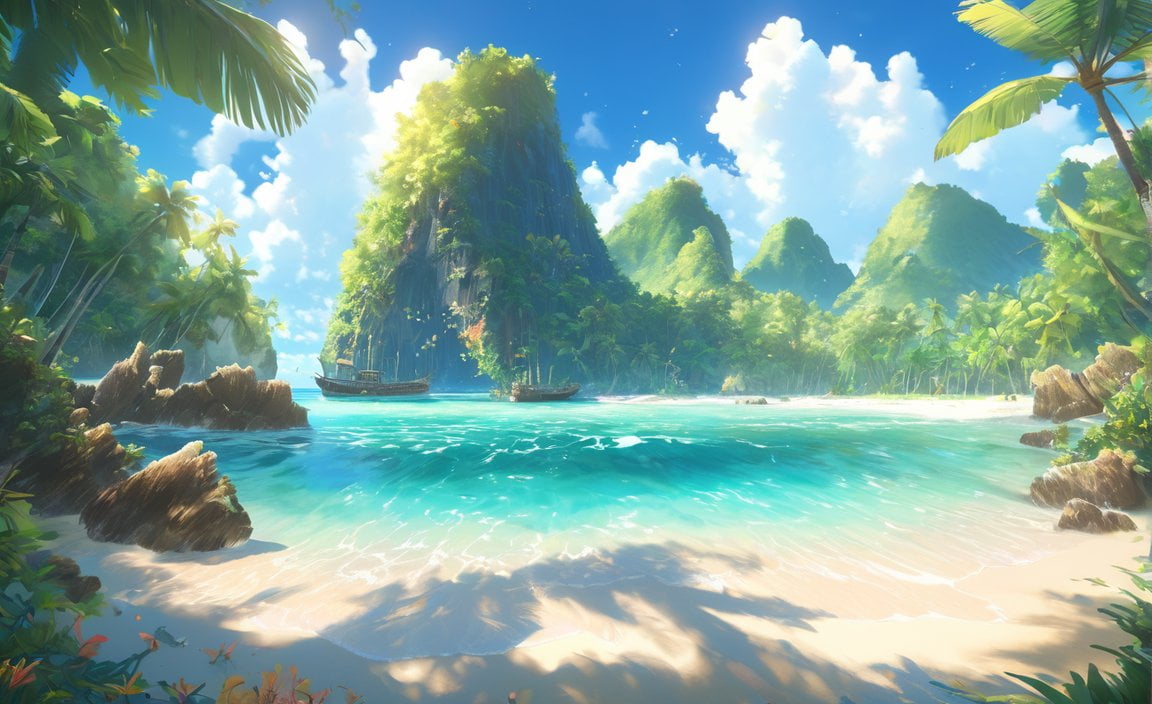
FAQ
Q1: What are the latitude and longitude coordinates of Guam?
A1: The latitude and longitude coordinates of Guam are 13.444304, 144.793732.
Q2: What is the strategic position of Guam?
A2: Guam is strategically positioned, being approximately 1,500 miles from Tokyo and Manila, and 3,800 miles from Honolulu.
Q3: Is Guam volcanically active?
A3: No, Guam is not volcanically active. However, it may be affected by volcanic smog from nearby Anatahan.
Q4: What is the geology of Guam?
A4: The geology of Guam is primarily formed by volcanic activity. The island emerged above water between 33.9 and 56 million years ago, built up by volcanic rocks erupting below the ocean.
Q5: How does climate change affect Guam?
A5: Guam is also affected by climate change. Rising water temperatures harm the algae that live inside corals and provide them with food, weakening and eventually killing the corals. Efforts are being made to assess climate change indicators and considerations for key sectors on the island.
- Lordsburg Municipal Schools (NM): A Parent’s Guide for 2024 - November 24, 2024
- Michael Tolkin: Decoding Hollywood’s Dark Heart and the Human Condition - November 24, 2024
- Exploring the Morongo Reservation: From Ancestral Lands to Modern Entertainment - November 24, 2024
